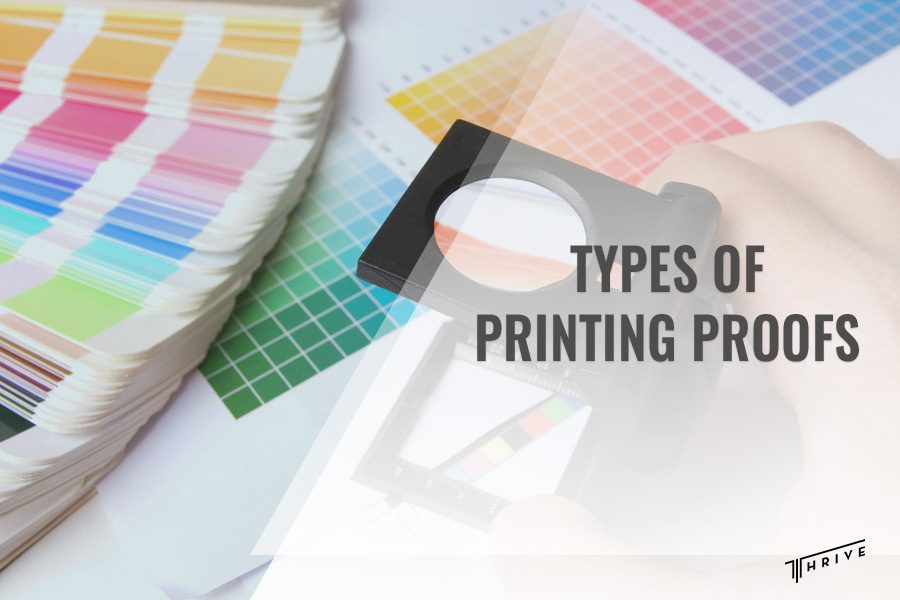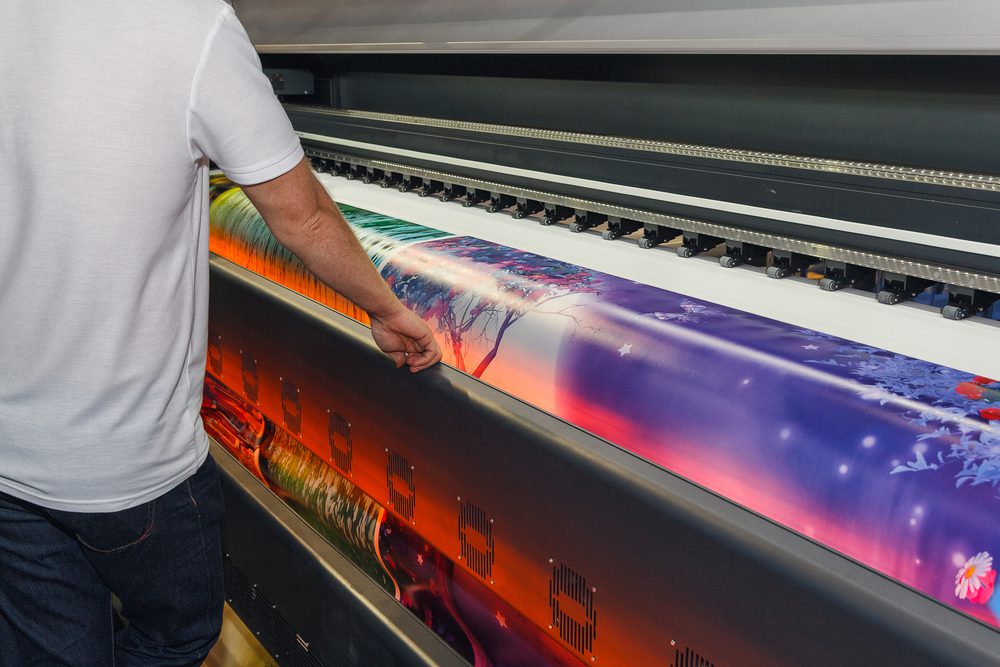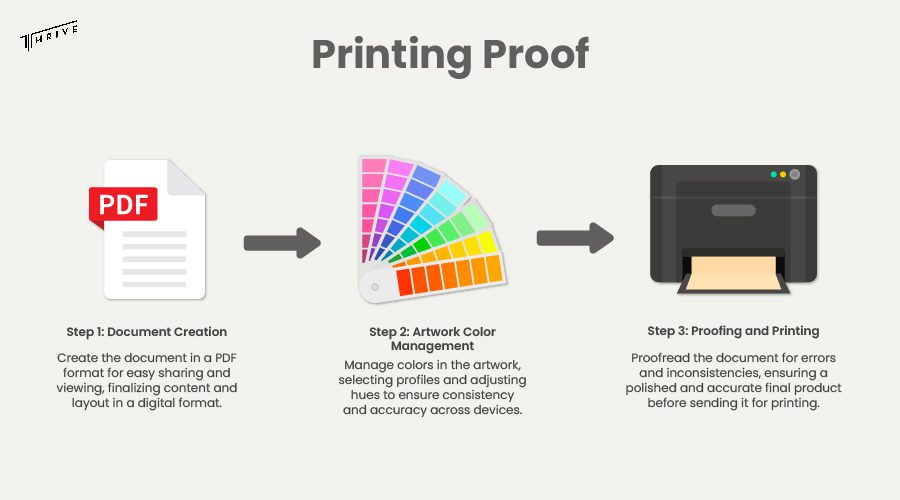
In the world of professional printing, the phrase “the devil is in the details” resonates with particular significance. This is why understanding the intricate realm of proof printing becomes essential. To help our clients have a more comprehensive understanding of why different printing proofs have an on the final printed item, we must inspect the variety of different types of printing proofs and explain their distinct purposes.
This guide will reveal how each type of proof plays a pivotal role in achieving printing perfection. It will discuss their individual function in the printing process and explore the significance of proofing in the printing industry.
Understanding the Different Types of Printing Proofs
The easiest way to explain the role of printing proofs is by looking into their individual purpose. Overall, printing proofs are best described as samples created by a printer before a full run production of a project.
Essentially, printing proofs are created to ensure that the client and the printing provider are on the same page regarding the project’s final outcome. However, contrary to popular opinion, not just a single form of printing proof applies to all printing efforts.
Practice reveals several printing proofs, each best suited for a specific situation. For instance, the printing proof used for direct screen printing might not be suitable for digital printing. Below, we will go into greater detail and explain what types of printing proofs are commonly used in the industry.

Screen proofs
Screen proofs are one of the most common proofs in the printing industry. This proof print process entails using computer software to evaluate image resolution, fonts, format, etc. Screen proofing offers a simple and affordable way to evaluate printing standards. We find this method a popular option among clients with a limited budget and those operating on tight deadlines.
Professionals in the printing industry also refer to screen proofs by their technical term, ripped PDF proofs. The software generates these reports, which can spot potential errors and notify you if corrections are needed.
While the colors might not offer high accuracy as this is not a physical product, screen-proof feedback offers value in layout and font evaluation.
Low-resolution proofs
Low-resolution proofing is another popular choice on the list of different types of printing proofs. The reason why they got their name is because these types of proofs will not print the exact quality of graphics and imagery as the final product.
“Low-resolution proofs” is an umbrella term for plotter, inkjet, and scatter proofs, as all of these are printed on paper. The difference between these subcategories, as their names imply, is that each utilizes a different printing method.
Being low-value projects, these are reserved for situations when a customer is keen on having a general overview of the end result. We may take scatter proofs as an example to explain low-resolution proofs better.
These proofs are usually reserved for multiple-page printing and are best suited for evaluation content placement and page positions. In such proofs, clients should not expect color accuracy as these are best suited for checking fonts and lines.
High resolutions proofs
Moving on to the types of printing proofs that offer high color accuracy, we have high-resolution proofs. These proofs are produced on a Pantone-calibrated printer and offer greater clarity and accuracy compared to the ones previously mentioned.
These are also known as digital proofs and allow both us and our customers greater insight into images and graphics. They show a more precise indication of the final printing product’s appearance. Due to their higher accuracy, high-resolution proofs are most common in large-volume printing jobs or more expensive printing projects.
Wet proofs
Wet proofs offer the most accuracy of all the types of printing proofs. They are an exact representation of what the final product will look like. This is because wet proofs are created by using the same materials and inks as in the final product. These printing proofs are typically produced using digital or litho printing presses and are mostly used in screen printing as prototypes of the final product. Some manufacturers also offer mockups of the final printing product. These are usually created per request, and the client receives just a single piece of the final product design.
Press pass proofs
Before diving into the details, we should mention that a press pass may take place only after all of the aforementioned types of printing proofs have been utilized. Simply put, a press pass proof is the final check in which we examine if the final product is in line with the high resolution and all the other qualities approved by the client. This stage doesn’t tolerate any mistakes, which is why it’s essential for all the other proofs to be carried out.
The press proof happens before the start of the commercial printing, and it allows us and the client to recheck and ensure the images, color, and text are all correct. This service is not offered regularly, and it is mostly reserved for high-profile projects only.
Why is Proofing Essential?
While we, as printing providers, strive to offer our clients the best results possible and meet all of their requirements, we consider their feedback vital in achieving optimal results.
In our experience, client ideas and final outcomes may differ widely in some cases. This usually happens when the chosen printing substrate doesn’t go well with the selected printing design. However, these situations are usually revealed later in proofing, such as wet proof and press pass proof.
In its essence, print proofing aims to eliminate all possibilities of errors before reaching the final printing stage. This is why professional printing services never send a design to print before it’s been proofed and approved by the client. Overall, proofing offers us precious feedback and helps overcome any uncertainties.

Conclusion
Each type explained in our exploration of different types of printing proofs plays a critical role in bridging the gap between a client’s vision and the final product.
We may conclude that printing proofs not only facilitates clearer communication between us and our clients but also ensures accuracy and satisfaction with the final outcome.
Whether it’s evaluating a layout with a screen proof or confirming color accuracy with a high-resolution proof, we believe proofs are essential in achieving success. Ultimately, understanding these proofs becomes essential in navigating the printing process.

Robert Fisher is the founder and CEO of Thrive Screen Printing and brings extensive experience in the screen printing and fulfillment industry.

